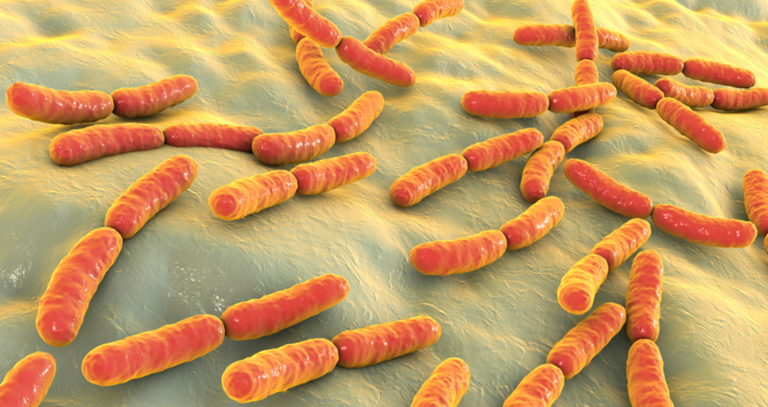Probiotics are widely celebrated for their health benefits—from maintaining gut microbiota balance to modulating the immune system and even influencing the gut–brain axis. Yet, ensuring that live probiotics survive the harsh journey through the gastrointestinal (GI) tract and reach their site of action remains one of the biggest hurdles in the field. Along the way, stomach acid, bile salts, digestive enzymes, and oxygen exposure can all drastically reduce probiotic viability before they colonize the gut.
For decades, this “last mile” challenge limited both the reproducibility of clinical studies and the effectiveness of commercial probiotic formulations. Today, however, advances in pH-responsive microencapsulation and colon-targeted delivery systems are helping overcome these barriers, protecting sensitive strains while ensuring their timely release where they are needed most.
Why pH-Responsive Delivery Is Crucial
The stomach’s acidic environment (pH 1.5–3.5) is lethal to many probiotic strains. Even those that survive must contend with bile salts and proteolytic enzymes in the small intestine. By the time they reach the colon—their primary site of action—only a fraction of viable cells often remain.
pH-responsive systems solve this by exploiting the natural pH gradient along the GI tract. They remain intact in the stomach but dissolve or become permeable at higher pH values (around 7.0 and above) in the distal small intestine and colon. This targeted release strategy maximizes probiotic survival and functional efficacy.
The Power of Microencapsulation
Among the most versatile approaches is microencapsulation, which embeds probiotic cells within a protective polymer matrix. Unlike simple coatings, probiotic microencapsulation can integrate multiple defensive layers and intelligent release mechanisms, creating a microenvironment that shields delicate microorganisms.
Natural polymers like alginate, pectin, and chitosan derivatives are common choices, alongside synthetic options such as HPMC and custom copolymers designed for enteric or sustained release. The inner matrix guards against acid and oxygen, while the outer pH-responsive layer ensures precise colon targeting.
Beyond Acid Resistance: Smarter Release Strategies
Next-generation delivery systems go beyond pH sensitivity. Some employ polysaccharide-based coatings that degrade only in the presence of colonic enzymes, adding a microbiota-triggered release mechanism. Others use time-dependent release designs—such as osmotic control layers—that allow gradual, sustained delivery of probiotics regardless of immediate pH fluctuations.
Testing and Optimization
Before clinical or commercial rollout, delivery platforms undergo rigorous in vitro testing. Simulated GI transit models replicate the sequential environments of the stomach, small intestine, and colon, allowing researchers to assess survival rates and release dynamics. Techniques like scanning electron microscopy (SEM) reveal capsule morphology, while CFU counts and flow cytometry track probiotic viability.
Advanced dynamic digestion models and colon fermentation systems further predict how encapsulated probiotics integrate with native gut microbiota—critical for designing functional foods and therapeutic applications.
Unlocking Next-Generation Probiotics
Next-generation probiotics (NGPs), including highly oxygen-sensitive strains like Bacteroides and Faecalibacterium, stand to gain the most from these innovations. Conventional formulations fail to protect such delicate microbes, but encapsulation systems tailored for gas permeability, degradation kinetics, and microbiota-triggered release can unlock their therapeutic potential.
Looking Ahead
As precision microbiome research accelerates in areas like metabolic health, immune modulation, and neurogastroenterology, effective delivery technologies will be key to turning promising strains into viable therapies. The fusion of polymer science, microbiology, and controlled-release engineering is paving the way toward formulations that are not only viable at ingestion but also fully active at their intended site of action.
In the end, the future of probiotics will hinge on more than just discovering beneficial strains—it will depend on mastering the science of getting them to the right place, at the right time, in the right form.
The health benefits of probiotics are widely recognized, from supporting gut microbiota balance to influencing the immune system and even modulating the gut-brain axis. Yet delivering live, active probiotics to the exact site of action in the gastrointestinal (GI) tract remains a formidable challenge. The journey from oral ingestion to colonization is fraught with hazards: stomach acid, bile salts, digestive enzymes, and oxygen exposure can all diminish the viability of probiotic strains before they reach their intended target.
For decades, this “last mile” problem in probiotic science limited the reproducibility of research and the performance of commercial formulations. Now, advances in pH-responsive microencapsulation and colon-targeted delivery system are offering a scientific solution — one that preserves probiotic viability while ensuring precise, timely release.
Why pH-Responsive Delivery Matters
The human stomach typically maintains a highly acidic environment (pH 1.5–3.5), which is lethal to many probiotic strains. Those that survive must then pass through the small intestine, where bile salts and proteolytic enzymes pose additional threats. In many cases, even hardy strains arrive in the colon at a fraction of their original viable count.
pH-responsive delivery systems address this problem by leveraging the natural pH gradient of the GI tract. These systems remain stable in the acidic stomach but are designed to dissolve or become permeable at higher pH levels — typically above pH 7.0 — which are found in the distal small intestine and colon. This ensures that probiotics are released exactly where they are most effective, maximizing both survival rates and functional impact.
The Role of Microencapsulation
Microencapsulation has emerged as one of the most versatile tools in probiotic delivery. The process involves embedding probiotic cells within a protective matrix made from natural or synthetic polymers. Unlike simple coating techniques, probiotic microencapsulation can combine multiple protective layers and intelligent release triggers, creating a controlled environment for sensitive microorganisms.
Key material choices include alginate, pectin, and chitosan derivatives from the natural polymer family, as well as synthetic options like hydroxypropyl methylcellulose (HPMC) and tailored copolymers for enteric or sustained release. The internal core shields probiotics from acid and oxygen, while the outer pH-responsive coating ensures targeted release in the colon.
Beyond Acid Resistance: Smart Release Mechanisms
The latest generation of colon-targeted systems incorporates more than just pH sensitivity. For example, some designs use polysaccharide-based coatings that are degraded by colonic enzymes produced by the gut microbiota. This adds a microbiome-triggered release component, further enhancing precision.
Time-dependent release strategies are also gaining traction. These involve osmotic control layers or diffusion-regulating matrices that allow probiotics to be released gradually over a specific timeframe, regardless of immediate pH changes.
Testing and Optimization
Before reaching clinical or commercial application, probiotic delivery systems undergo extensive in vitro testing. Simulated GI transit models replicate the sequential environments of the stomach, small intestine, and colon, enabling researchers to evaluate survival rates, release profiles, and structural stability. Analytical techniques such as scanning electron microscopy (SEM) help visualize capsule morphology and coating thickness, while colony-forming unit (CFU) counts and flow cytometry measure cell viability over time.
Dynamic digestion models and colon fermentation systems can further integrate microbial ecology, allowing scientists to predict how encapsulated probiotics interact with existing gut communities. These insights are invaluable for applications ranging from metabolic research to functional food development.
Applications in Next-Generation Probiotics
Next-generation probiotics (NGPs), which often include anaerobic, oxygen-sensitive strains like Bacteroides or Faecalibacterium, stand to benefit most from advanced delivery technologies. These microbes are particularly vulnerable to acid, oxygen, and digestive enzymes, making conventional formulation approaches ineffective. By designing encapsulation systems that account for gas permeability, coating degradation kinetics, and microbiota-triggered release, researchers can unlock the therapeutic potential of these delicate but powerful strains.
Looking Ahead
As the demand for precision microbiome modulation grows in fields such as metabolic health, immune regulation, and neurogastroenterology, probiotic delivery solutions will play a pivotal role. The combination of polymer science, microbiology, and controlled-release engineering offers a robust path forward, ensuring that probiotic formulations are not only viable at the time of consumption but also effective at the point of action.
Ultimately, the future of probiotics will depend on more than just identifying beneficial strains — it will hinge on mastering the science of getting them “there on time.”
https://www.homesarah.com/

